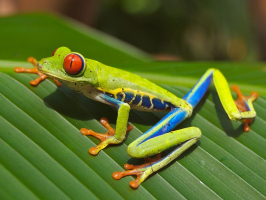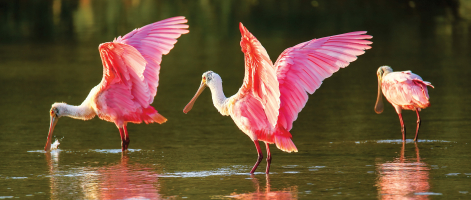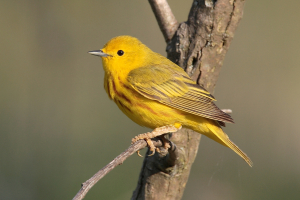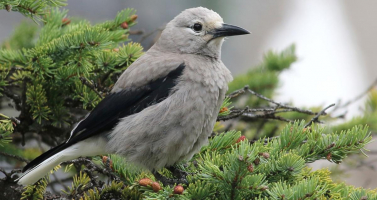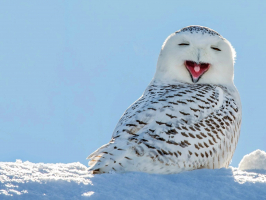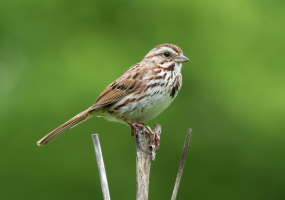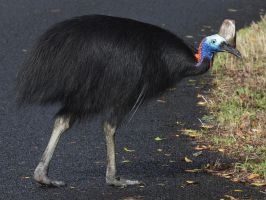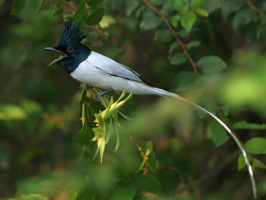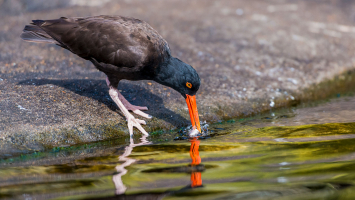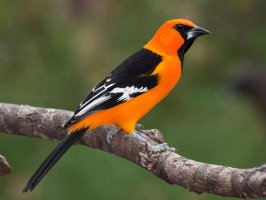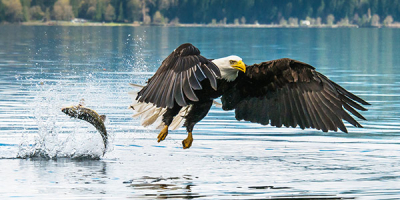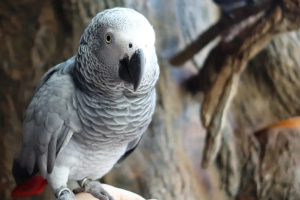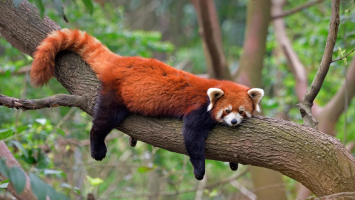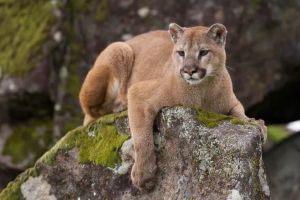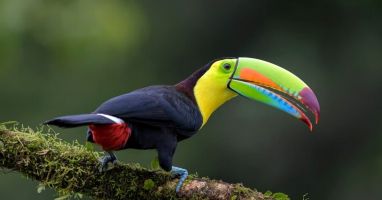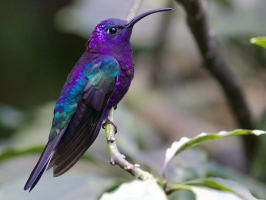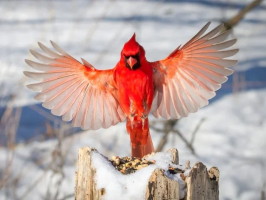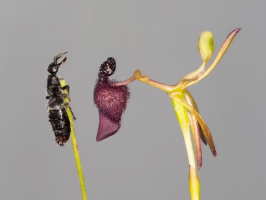Top 10 World's Beautiful Green Birds
Nature brings a plethora of various mesmerizing colors. When most people think of a color for nature, the first one that pops into mind might probably be ... read more...green. It’s the color of trees, grass, and some animals. While it might be a common color in reptiles and amphibians, few birds are also green. Below is a list of the most beautiful green birds in the world, let's find out!
-
The Guinea Turaco (Tauraco persa), also known as the green turaco or green lourie, is a species of turaco, a group of otidimorphae birds belonging to the family Musophagidae. It was formerly included in the Livingstone's, Schalow's, Knysna, black-billed, and Fischer's turacos as subspecies.
The Guinea turaco, often inconspicuous in the treetops, is approximately 40–43 cm long, including a long tail. The weight can reach 225–290 g. With the exception of the crimson primary feathers, which are particularly noticeable in flight, the majority of the plumage is vivid green and blue, and the tail and wings are dark purplish. A green erectile semicircular crest is visible on the head. Patches of red and white are visible on the eyes. The crimson, thick bill is thick. The Buffon's turaco, which is the westernmost subspecies of the Tauraco Persa turaco, has a black line beneath the eye and a white line above and in front of it.
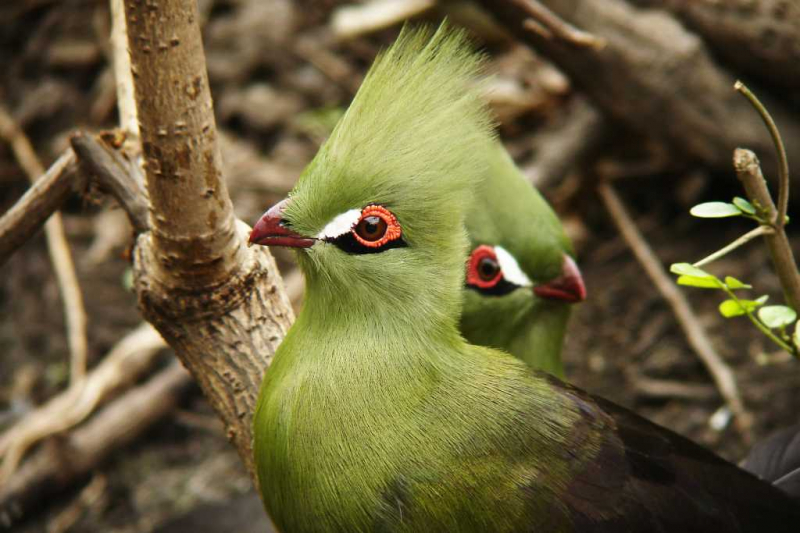
Flickr 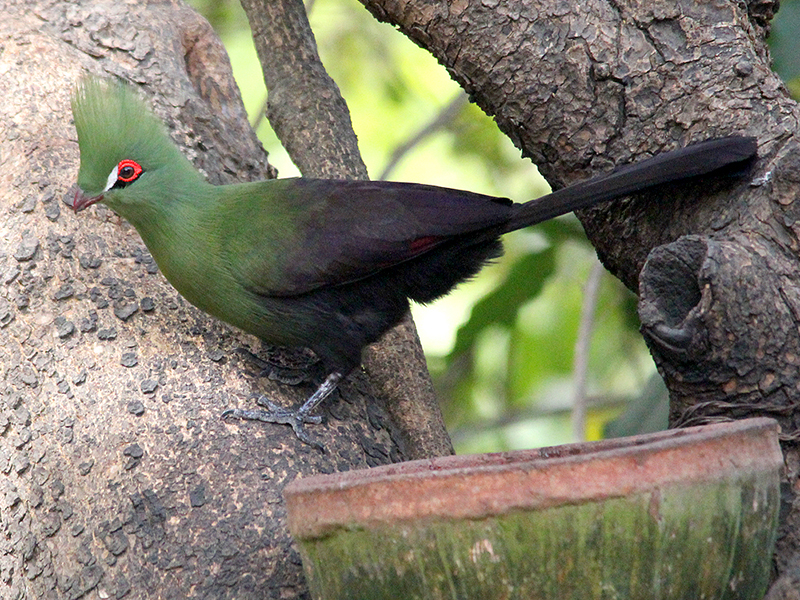
Observation.org -
The Resplendent Quetzal (Pharomachrus mocinno), is a small bird with two known subspecies—P. m. mocinno and P. m. costaricensis—is found in southern Mexico and Central America. These species, which belong to the family Trogonidae, are common in tropical forests, particularly montane cloud forests. Like other quetzals, the dazzling quetzal is an omnivore that mainly eats fruits from the Lauraceae family but also occasionally takes insects, lizards, frogs, and snails.
The resplendent quetzal is the largest trogon. The tail streamers of the nominate subspecies range in length from 31 cm to 100.5 cm, with the median length for males being 75 cm. It is 36 to 40 cm long. The costaricensis subspecies, which weigh about 210 g, are a tiny bit smaller than the nominate subspecies and have smaller wings and bills. The tail plumes' lengths, which range from 63 cm to 86 cm, are shorter and slimmer on average. Males have iridescent green plumes, a crimson lower breast and abdomen, black inner wings, and a white undertail, whilst females are duller and have shorter tails. Females can be identified by their grey lower breasts, bellies, and bills, as well as their bronze-green heads.
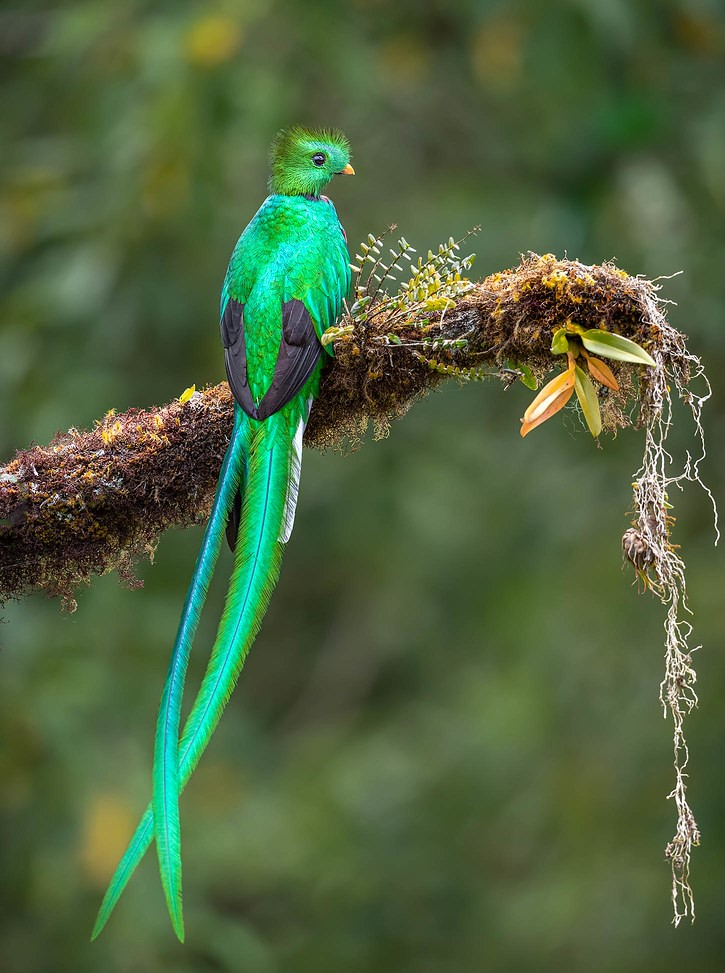
Flickr Epic Nature Judy Lehmberg -
Australia is home to the colorful Princess Parrot (Polytelis alexandrae), a member of the family of parrots. It was given that name in honor of Princess Alexandra of Denmark, who wed Prince Edward VII of Wales in 1863 and went on to become the monarch of the United Kingdom. Other names for the species include spinifex parrot, princess of Wales parakeet, rose-throated parakeet, and queen Alexandra parrot (or parakeet).
A medium-sized parrot, the princess parrot measures 34 to 46 cm in length and weighs between 110 and 120 g. With a pink throat, bluish crest, and vivid green shoulders, the plumage is primarily green. The tail is long and slender, and the rump is blue. In comparison to females, males have larger tail feathers and more vibrant colors. Additionally, the beak of the male is coral-red, while that of the female is duller and has a greyish crown. The iris of the male is orange, whereas that of the female is somewhat browner. Additionally, on each side of the 3rd primary (flight) feather, the male of the species has a longer, projecting extension.
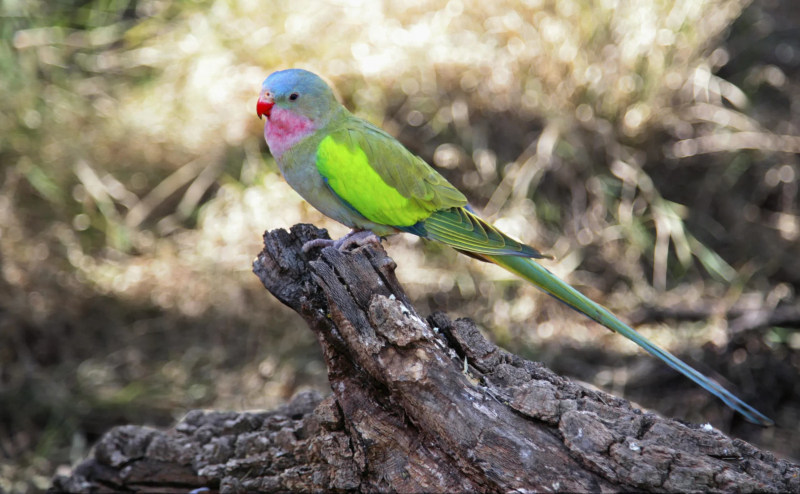
Wikipedia 
Wikipedia -
The Green Kingfisher (Chloroceryle americana) is a resident breeding bird that occurs from southern Texas in the United States south through Central and South America to central Argentina. This tiny kingfisher nestles in mangroves or woodlands near streams. Both sexes work together to dig the horizontal tunnel in which the nest is located. It is constructed in a riverbank and is up to one meter long. Between three and six white eggs are laid by the female. Green kingfishers are frequently spotted perched on a low, shady branch near water before diving in head first after fish. They also consume aquatic insects. These birds frequently make a pebbly rattling sound.
The green kingfisher has a length of 20 cm. The female is 33–55 g and the male is 29–40 g in weight. It has a short tail and a large bill, which are characteristics of kingfishers. Above, it is an oily green color with white markings on the wings, tail, and collar. Apart from a wide chestnut breast band and some green patterning on the flanks, males have white underparts. The underparts of females are buff-white, and they have two green breast bands on their chests, the lower of which connects to the green spots on the sides of their bellies.

eBird 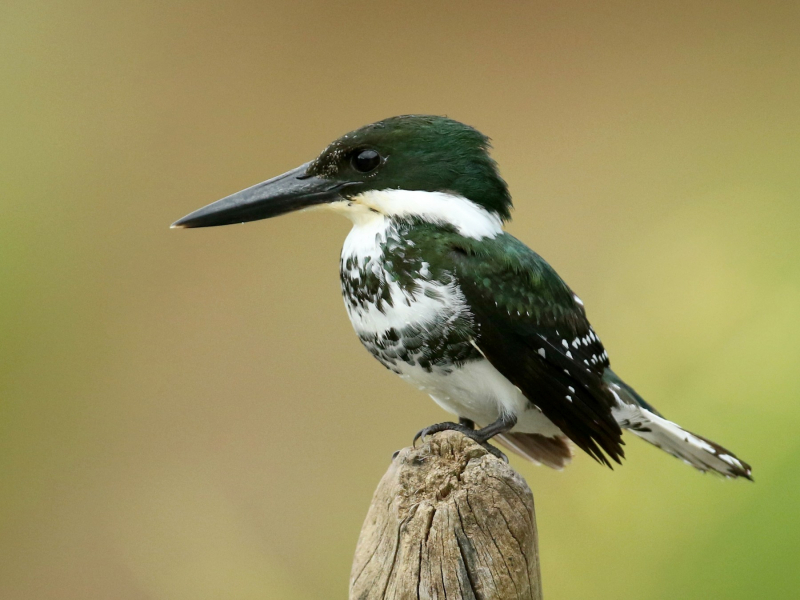
eBird -
The Green Jay (Cyanocorax luxuosus) is a species of the New World jays and is found in Central America. The basic diet consists of arthropods, vertebrates, seeds, and fruit. The female incubates the clutch of three to five eggs, which are normally built in a thorny shrub. The International Union for Conservation of Nature has designated this common species of jay as having the "least concern" for its conservation.
Green jays range in size from 25 to 29 cm. Ranges from 66 to 110 grams in weight. On the top of their heads, cheeks, and nape, they have yellowish-white feathers with blue tips, while certain taxa have more blue than others. The breast and underparts range from bright yellow in the south to pale green in the north (e.g., Texas). Rich green covers the top portions. It has broad nasal bristles, some of which create a conspicuous tuft while others are less developed. Depending on the subspecies, the iris can be anything from dark brownish yellow to bright yellow.
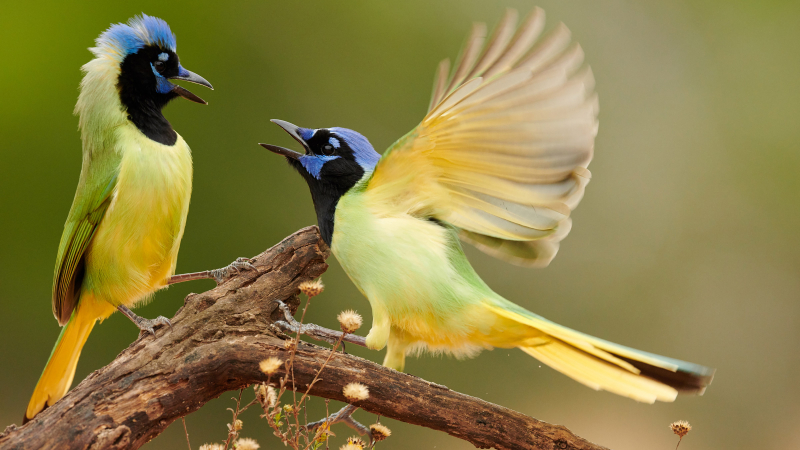
National Audubon Society 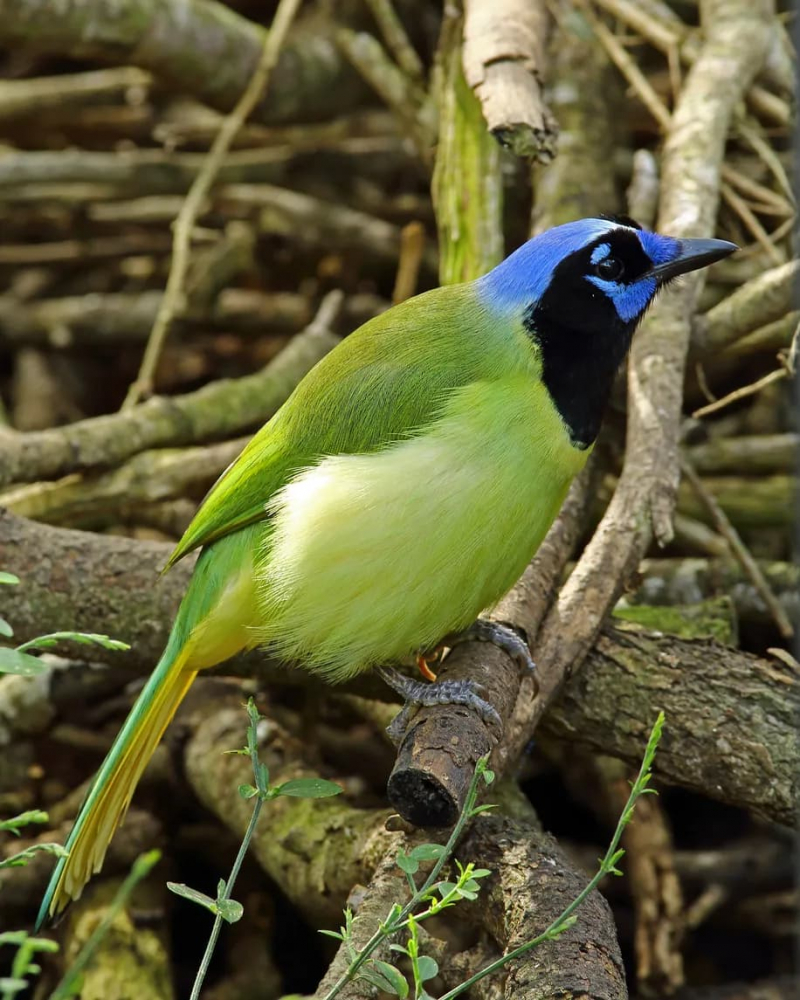
All About Birds -
The Asian Green Bee-Eater (Merops orientalis), also known as the little green bee-eater, and green bee-eater in Sri Lanka, is a near passerine bird in the bee-eater family. It is extensively spread throughout Asia, from coastal southern Iran in the east through the Indian subcontinent to Vietnam, and is resident but prone to seasonal movements. Populations that were earlier categorized as belonging to this species (under the name Green Bee-eater) in Africa and the Arabian Peninsula are now thought to be separate species. They are primarily insect-eating animals that live in grassland, thin scrub, and forests, typically at a distance from bodies of water.
This type of bee-eater is a slim, vividly colored bird. The extended middle tail feathers make up around 2 inches of its approximate 9 inches (16–18 cm) length. There is no visible difference between the sexes. The chin and throat are particularly blue-tinged, and the entire plumage is vivid green. The upper back and crown have golden rufous undertones. The flying feathers are rufous with a green wash and blackish tips. In front of and behind each eye is a thin black line. The legs are dark grey, the iris is scarlet, and the bill is black. The three toes of the foot are connected at the base, making them weak.
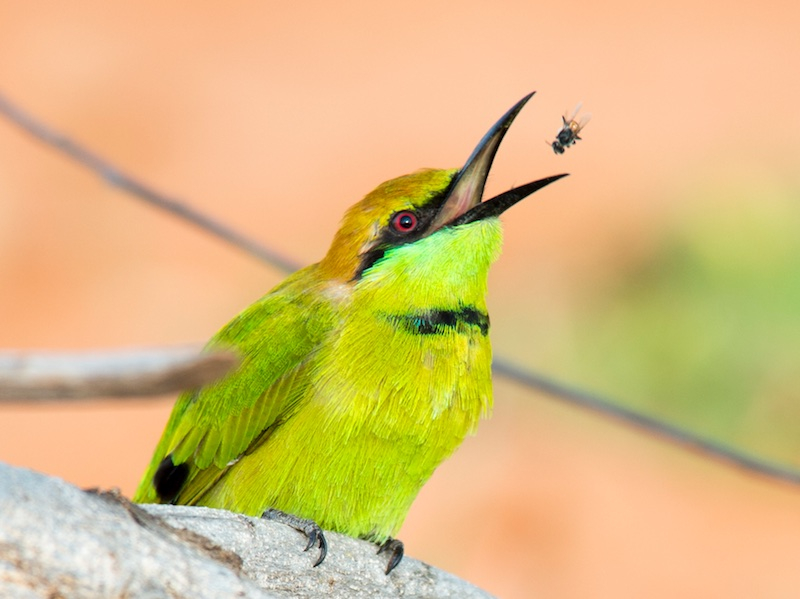
Vietnam Bird Guide 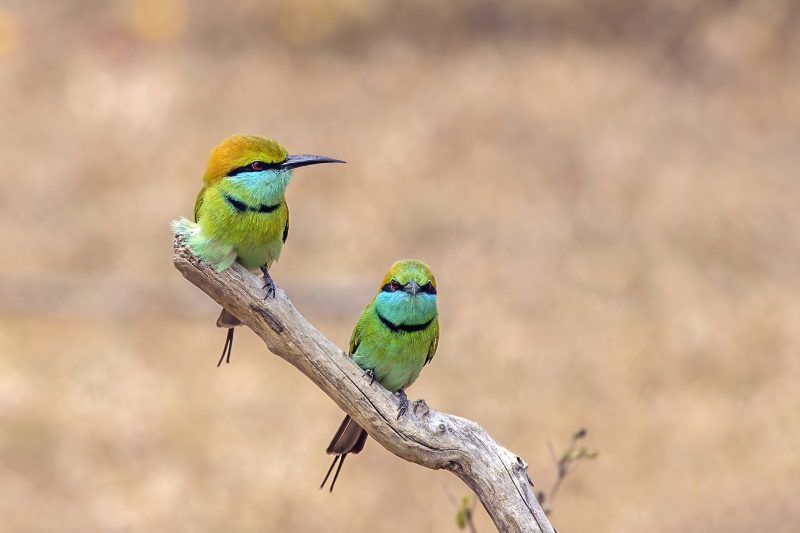
Wikiwand -
The Rosy-Faced Lovebird (Agapornis roseicollis), also known as the rosy-collared or peach-faced lovebird, is a species of lovebird native to arid regions in southwestern Africa such as the Namib Desert. These gregarious birds typically congregate in small groups in the wild and chirp loudly and continuously. They eat throughout the day and frequently bathe. The distinctive sleeping position of lovebirds, where they sit side by side and tilt their faces inward, is well known. It is also well known that females cut raw materials into long strips and "twisty-tying" them to their backs before flying long distances back to create nests. They are common in the pet industry.
The rosy-faced lovebird is a little bird, measuring 17 to 18 cm in length, with average wing and tail lengths of 106 and 44 to 52 mm, respectively. Wild birds have a blue rump and a green body. The forehead and area above the eye are the darkest parts of the pink face and throat. The iris is brown, the legs and feet are grey, and the bill is colored like a horn. Compared to the A. r. catumbella, the A. r. roseicollis has a paler pink color. Young birds have a brownish base to their beak, a pale pink face, and throat, and a greenish fore, and crown. Male and female birds have the same plumage.
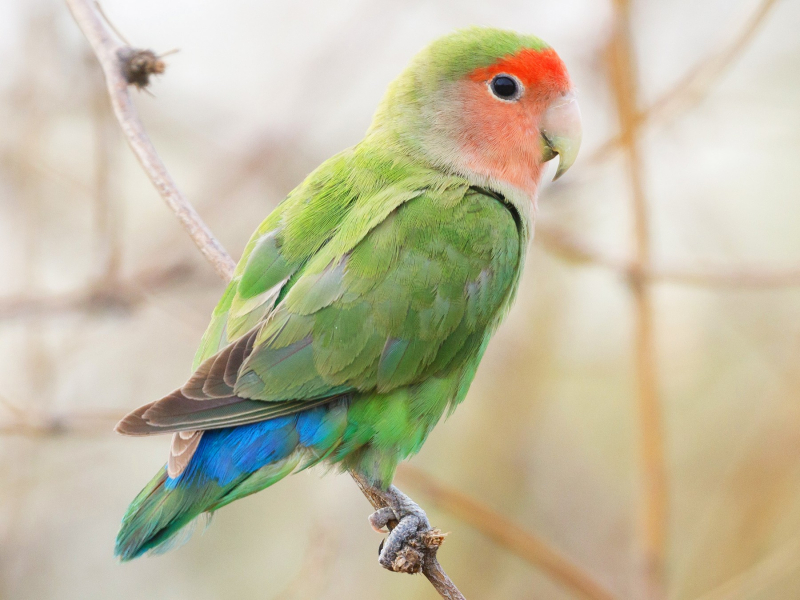
Wikipedia 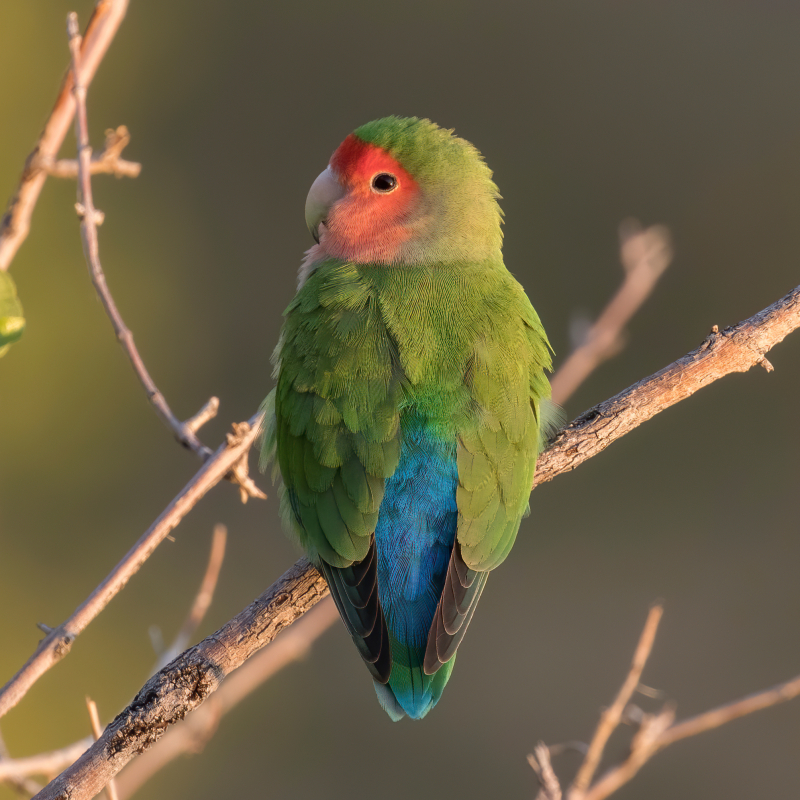
eBird -
The Great Green Macaw (Ara ambiguus), also known as Buffon's macaw or the great military macaw, is a Central and South American parrot found in Nicaragua, Honduras, Costa Rica, Panama, Colombia, and Ecuador. These birds have been recorded feeding on a wide variety of foodstuffs in the wild such as seeds, nuts, and fruits, but also including flowers, bulbs, roots, and bark. An extremely loud, raucous "aak, raak" that can be heard at great distances. Captive birds will emit loud squawks and growls, and also make creaking or groaning sounds.
The great green macaw is the largest parrot in its native habitat, the second heaviest macaw species in the world (although it is slightly shorter due to its shorter tail than other large macaws like the red-and-green macaw), and the third heaviest parrot species overall. This species weighs 1.3 kg on average and measures 85–90 cm in length. Their upper tail feathers are pale blue, while their lower back, rump, and forehead are reddish. They are primarily green in color. The tail is brownish-red with a really light blue tip. Lines of tiny, dark feathers, which are reddish in older and female parrots, are patterned on the naked flesh of the face. Juveniles are duller in color, have shorter tails with a yellow tip, and have grey eyes rather than black eyes.
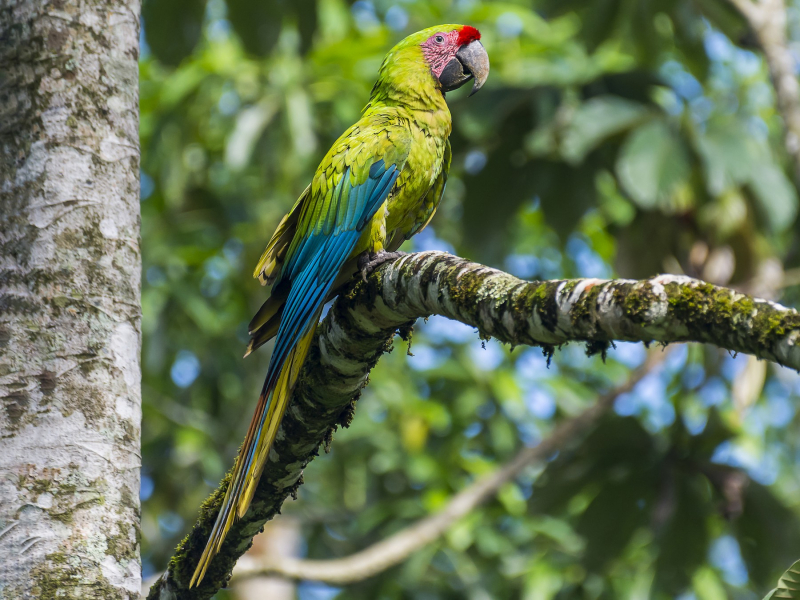
eBird 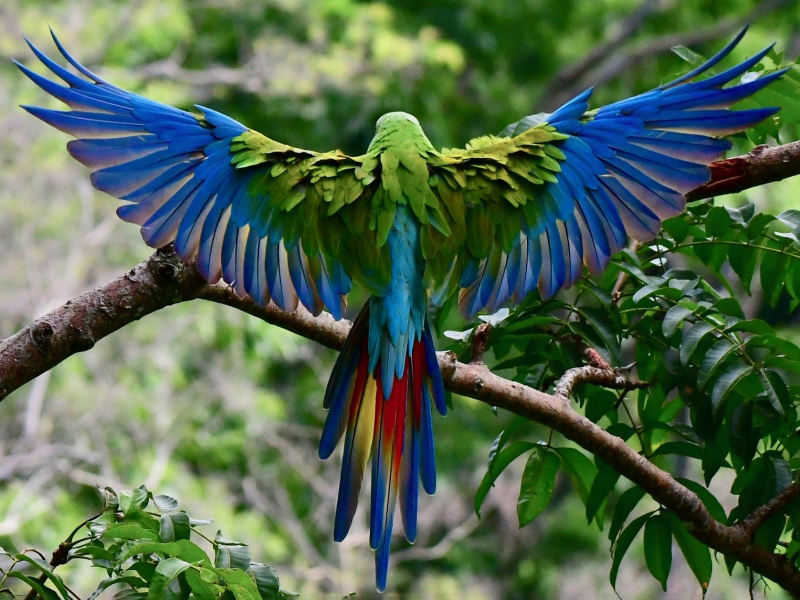
eBird -
The Green-Breasted Mango (Anthracothorax prevostii) is a hummingbird from tropical America. The scientific name of this bird commemorates the French naturalist Florent Prévost. This species breeds in Central America, including several near-shore islands, and breeds in Costa Rica from eastern and southern Mexico. The presumably conspecific Veraguan mango Anthracothorax veraguensis takes its place in western and central Panama.
This medium-sized hummingbird species has adults that measure 11–12 cm in length. In general, men weigh 7.2 g and women 6.8 g. The somewhat decurved black bill is somewhat long. Both sexes have dark center feathers on the tail. The outer tail feathers of adult males have black tips and range in color from deep magenta to wine purple. The outer tail feathers of females and young males have broad magenta and iridescent dark blue bands, with slender white tips on the outer 3–4 feathers. The adult male's upper parts are a glossy bright green color. His chest and throat have a very small matte black central area that is surrounded by a blue-green border. The black of the chest tapers onto the belly, while the flanks are a vivid green color.
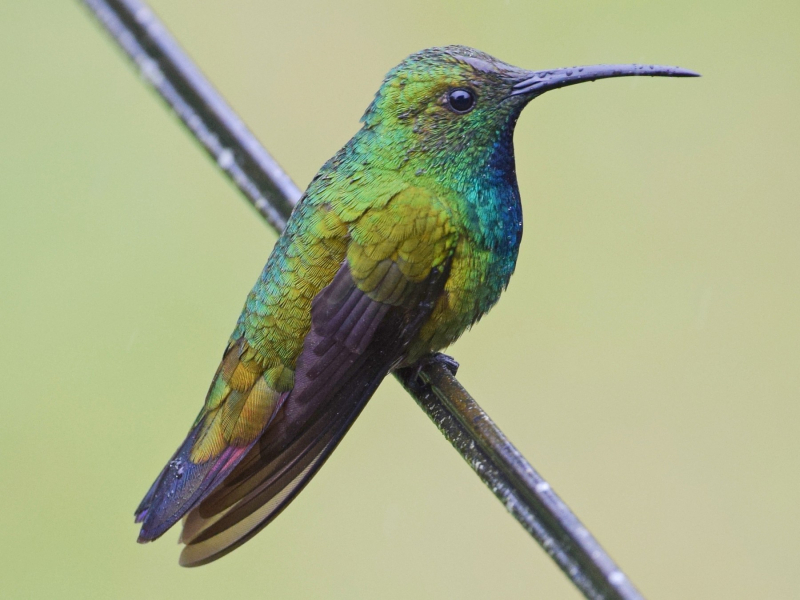
eBird 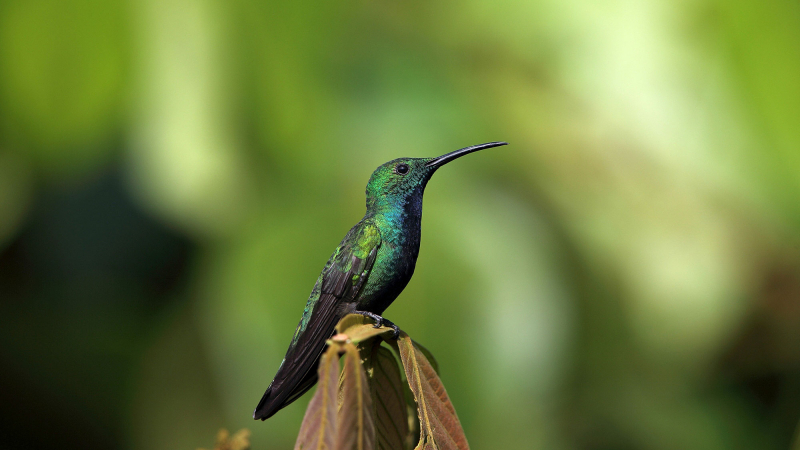
National Audubon Society -
The Pacific Parrotlet (Forpus coelestis), also known as Lesson's parrotlet, or the celestial parrotlet, is a species of small parrot in the family Psittacidae. Wild Pacific parrotlets are native to western Ecuador and northwestern Peru. Most common in dry habitats such as the desert and deciduous forest, but have spread into humid areas in response to deforestation. They tend to feed on berries and cactus fruits but are not picky in their feeding. In captivity, parrotlets eat many fruits, seeds, vegetables, and herbs.
This small green parrot is 11 to 14 centimeters in length and weighs at least 30 grams. The body of a wild Pacific parrotlet is green with a dusty gray hue, a bright green mask, and a pinkish beak. Pinkish gray describes the legs and feet. Male Pacific parrotlets have blue hues on their wings, which are sexually dimorphic. On American birds, the blue can range in intensity from vivid cobalt blue to a light, almost lavender shade of blue; the blue is nearly completely absent on marbled species, appearing only on the underside of the wing just at the joint. Male parrotlets also have blue streaks behind the eyes which is often referred to as "eyeshadow", as well as blue rumps. Female parrotlets have no blue on the wings whatsoever but can have blue eye streaks as well as a blue rump.
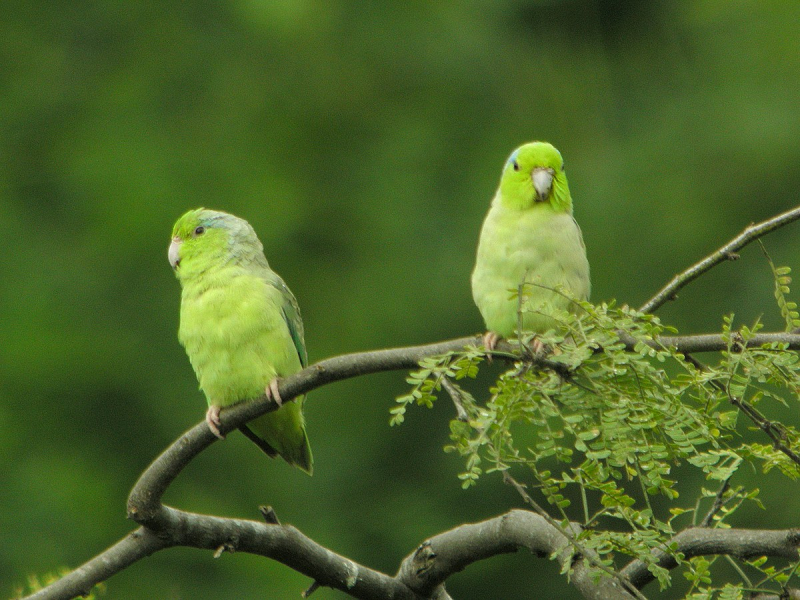
Wikipedia 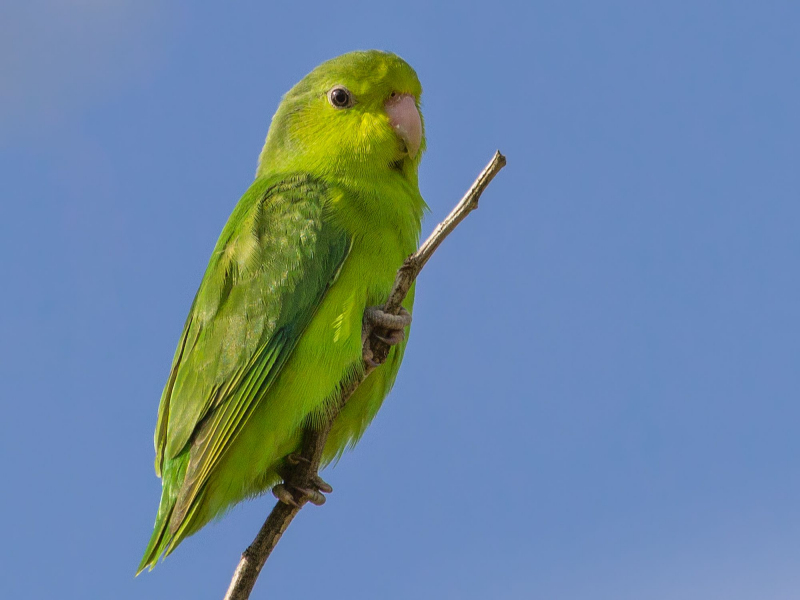
The Spruce Pets












